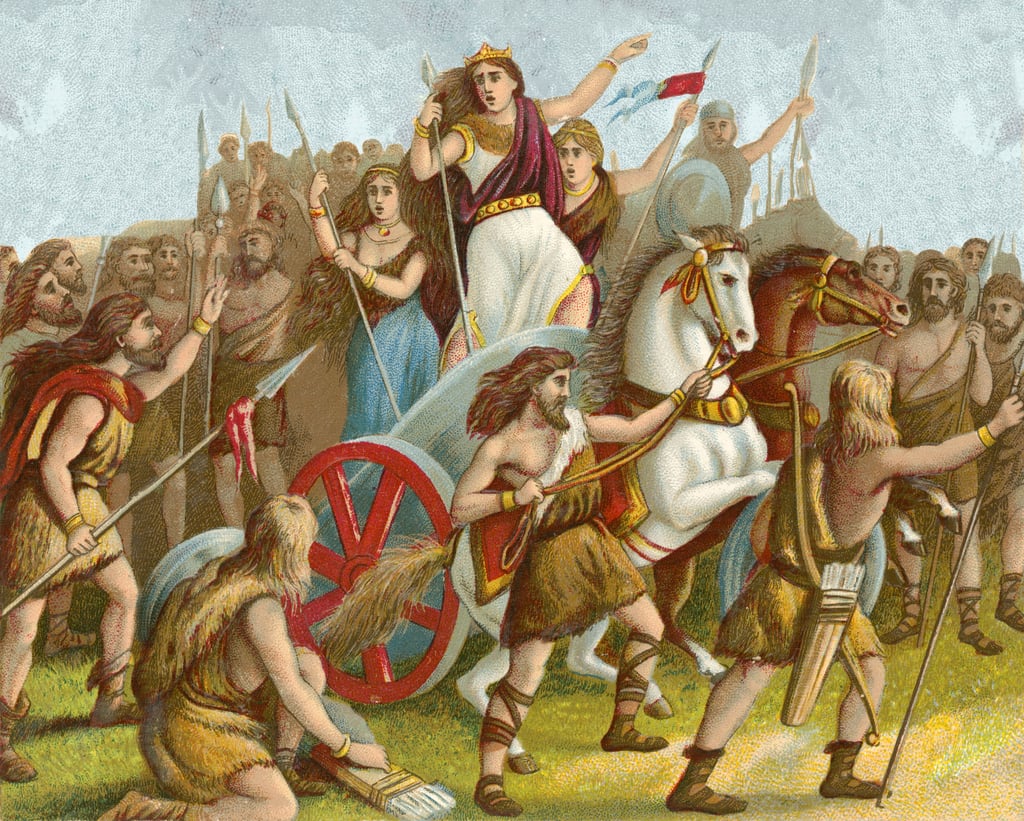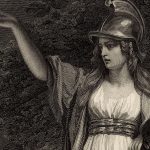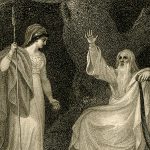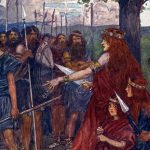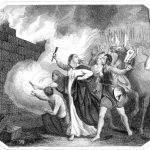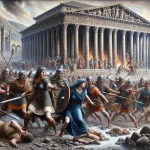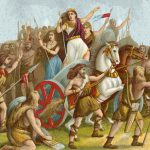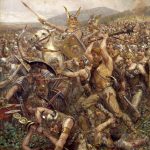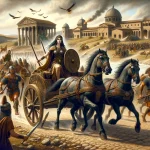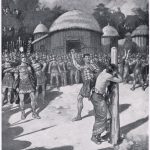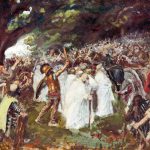Boudica, or Boadicea as she is more commonly called, was a Celtic queen of the Iceni Tribe, who led a revolt against Roman rule in ancient Britain in A.D. 60 or 61.
- Boudica’s Early Life
- The Iceni Client State
- Causes of Boudica’s Rebellion
- Boudica’s War
- Why did the Trinovantes join Boudica?
- Boudica’s Attack on Camulodunum
- Boudica’s Attack on Londinium (London)
- Attack on Verulamium (modern St Albans)
- Suetonius attacks Boudica
- What Happened to Boudica?
- The Sources for Boudica
Boudica’s Early Life

It’s believed she was born into an elite family in Colchester(Camulodunum) around A.D. 30. Like other ancient Celtic women, Boudica had trained as a warrior, including fighting techniques and the use of weapons.
In her adolescence, Boudica would have witnessed the upheaval caused by the Claudian invasion. She would have been aware of the influx of soldiers into southeast Britain, the swift transformation of Camulodunum into a Roman provincial capital.
At the age of 18, Boudica married Prasutagus, a noble of the Iceni tribe of modern-day Norfolk , in eastern England. Antedios, an older relative of Prasutagus was probably the King of the Iceni until their revolt in 47 AD. Prasutagus succeeded him as King. Boudica gave birth to two daughters whose names are unknown and she remained at Prasutagas side until his death from illness.
Was Boudica a Queen?
Historical sources do not directly refer to Boudica as a Queen. Tacitus in Agricola refers to her a “Boudica, a woman of kingly descent” and in his Annals he mentions that she is the wife of the king. Cassius Dio describes her as “Buduica, a Briton woman of the royal family”, although later he quotes her describing herself as the queen. Compare this to Tacitus describing Cartimandua and “Queen of the Brigantes”.
The Roman historian Tacitus tells us that the Celts made no distinction of sex when appointing their commanders and in western Iberia. According to the Greek historian Strabo, women fought alongside men. For the Celts, a woman could not only wage war—she was also a warrior herself.
The Iceni Client State
Boudica’s people once welcomed the Romans. Nearly 100 years earlier, when Gaius Julius Caesar made the first Roman foray into Britannia in 55 and 54 BC, the Iceni were among six tribes that offered him their allegiance.
When the Romans conquered southern England in A.D. 43, most Celtic tribes were forced to submit. Several leaders offered to make their kingdoms “client-states” of Rome. This basically meant that as long as their leaders lived, and did Rome’s bidding when asked, they could maintain some level of sovereignty within the Roman Empire. The Iceni were one of the tribes who agreed to be a client state of Rome. In A.D. 47, a short-lived unsuccessful revolt was launched by the Iceni against Rome. This rebellion may have led to the elevation of Prasutagus to the leadership of the tribe, perhaps being seen by the Romans as a leader who could keep the Iceni in line.
Causes of Boudica’s Rebellion
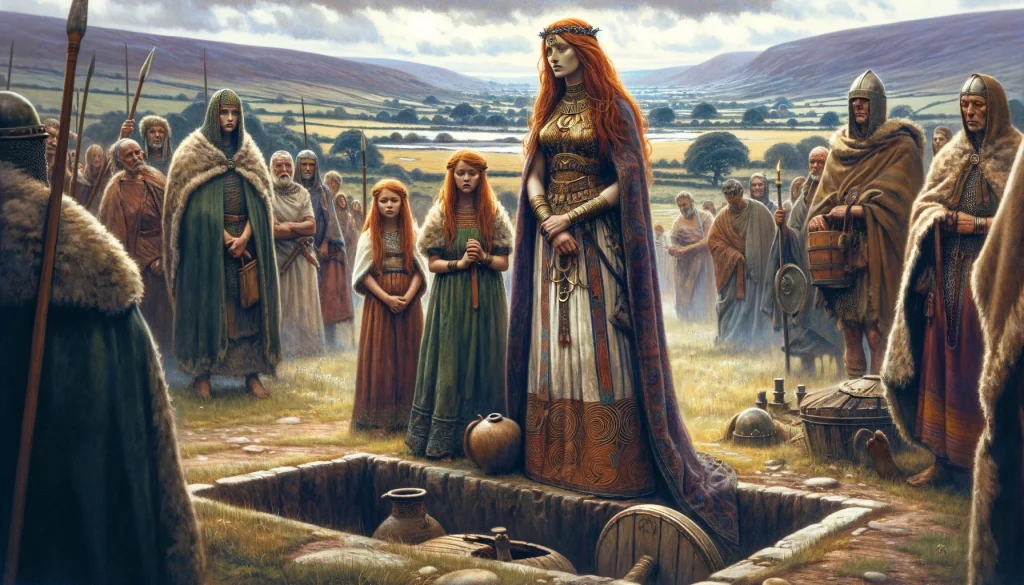
In A.D. 60. Prasutagus died around without a male heir, he left his kingdom to his two daughters and the Roman emperor Nero.
However the Romans, ignored his will and decided to call in debts that the late king had accumulated. The lands and property of leading Iceni tribesmen were confiscated and the people stripped of their ally status, effectively reducing them to the level of slaves. As a further humiliation, they publicly flogged Boudica and her two daughters raped by Roman soldiers. Boudica swore revenge and began to muster an army to rebel against her oppressive new masters.
Boudica’s War
Boudica led a rebellion of the Iceni with support from a neighbouring Trinovantes and other tribes. The combined army was of around 100,000 Britons, all under the command of Boudica.
It is worth noting that other tribes, such as the Cantaci did not join in with the rebellion. Boudica’s Attack on Camulodunum
At this time the Roman provincial governor Gaius Suetonius Paulinus was leading a military campaign on the island of Mona (modern Anglesey) in North Wales
Why did the Trinovantes join Boudica?
The Trinovantes first major grievance was that all around Colchester their land was seized and given to Roman veterans. Tacitus describes the land taken from the Trinovantes as captured territory (agri captivi). The natives were driven from the land and treated as captives and slaves.
Another reason could have been the building of the temple of Claudius in Colchester. After the death of Claudius in AD54 the senatre at Rome declared him a god and the construction of a Temple for him began at Colchester.
Boudica’s Attack on Camulodunum
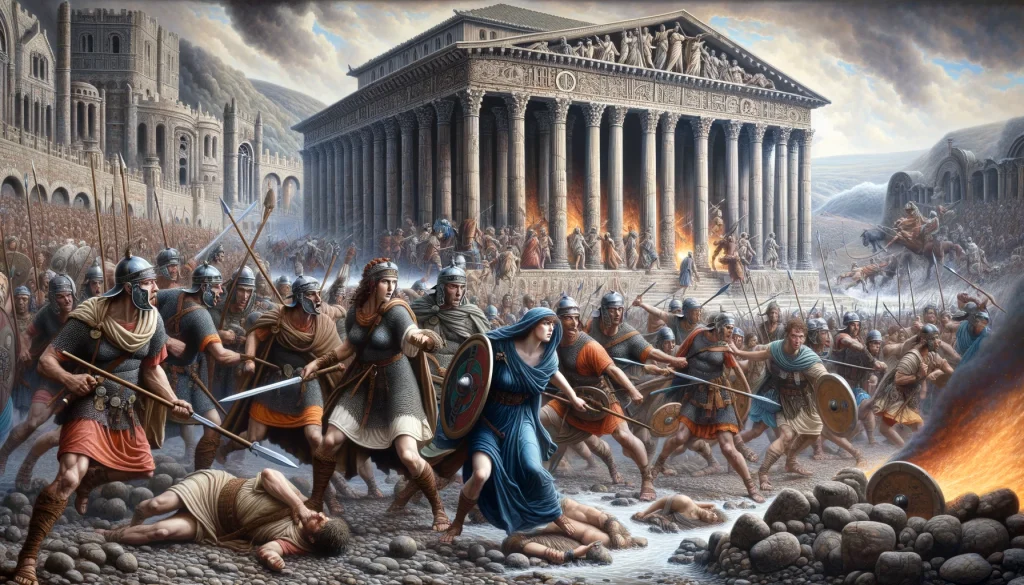
First, Boudica marched on Camulodunum (modern Colchester), which was the provincial Roman capital of Britain at the time.
The Roman citizens of Camulodunum appealed to imperial agent Catus Decianus for help. He sent a lightly armed force of 200 men who, together with a small number of veteran soldiers proved ineffective in defence of the city. Boudica’s army laid waste to the town, burning it to the ground, massacring its inhabitants (Romans and pro-Roman Britain’s alike) and decapitating a bronze statue to the emperor Nero.
The Roman Ninth Legion, under the command of Quintus Petillius Cerialis, attempted to relieve the city but Boudica routed the advancing army and annihilated most of the legion.
Boudica’s Attack on Londinium (London)
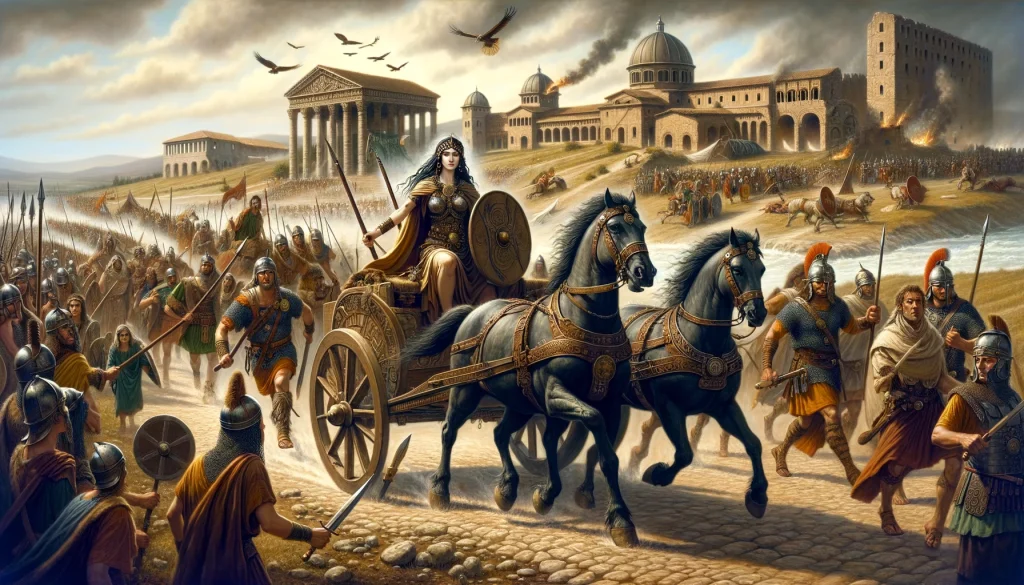
Londinium (modern London), the trade centre of the Roman Empire in Britain, now lay ahead. By this time, Suetonius had got word of the revolt and began marching his troops back down south. He arrived at Londinium before Boudica, however, the settlement was poorly fortified and with just a few thousand men Suetonius decided to abandon the town to the rebels.
Londinium suffered the same fate of Camulodunum with Boudica’s forces razing it to the ground and killing and torturing anyone who had failed to evacuate.
Attack on Verulamium (modern St Albans)
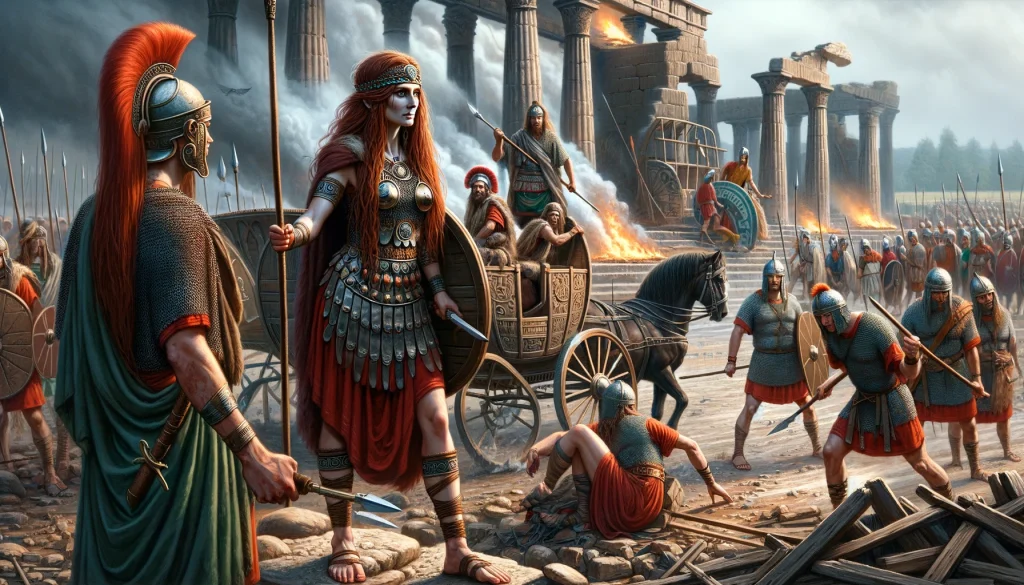
Verulamium (modern St Albans) would be their next target and again Suetonius refused to defend the town, leaving it to be freely sacked, burned and obliterated by the warrior Queen.
Accounts suggest that between 70,000-80,000 people were killed when Boudica destroyed those three settlements. Nero was said to be contemplating pulling out of Britain altogether.
Suetonius attacks Boudica
Although Boudica’s army had now grown even larger in size, her campaign of revenge was about to come to an end.
Suetonius regrouped his forces and amassed an army of around 10,000 men. A master of military tactics, Suetonius designed a plan that would effectively eliminate his enemy’s numerical advantage. He chose a steep-sided narrow gorge with woods protecting his rear as the spot to make his stand, denying the rebels the chance to exploit their superior numbers. Although the location of the final battle is unknown, historians have suggested it could have taken place along the Roman road now known as Watling Street, somewhere most likely in the West Midlands.
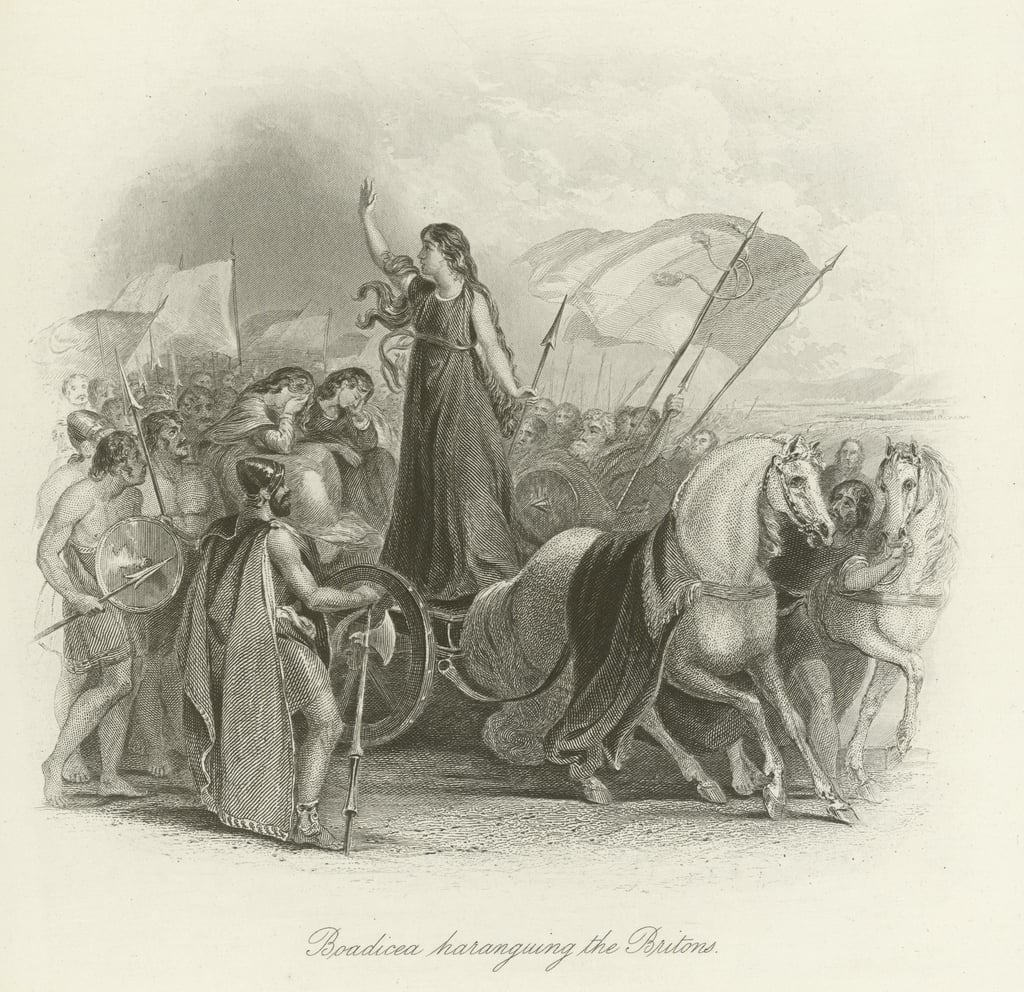
Before the battle commenced, Tacitus records that Boudica addressed her troops. ‘It is not as a woman descended from noble ancestry, but as one of the people that I am avenging lost freedom, my scourged body, the outraged chastity of my daughters. Roman lust has gone so far that not our very persons, nor even age or virginity, are left unpolluted. But heaven is on the side of a righteous vengeance; a legion which dared to fight has perished; the rest are hiding themselves in their camp, or are thinking anxiously of flight…This is a woman’s resolve; as for men, they may live and be slaves.’
However, Boudica’s opposition was better trained, better disciplined and better equipped. The rebels had also made the fateful decision of encircling their rear with their families, wagons and animals, preventing any escape once the battle had been lost. In the end, her troops were slaughtered almost to the last, whilst the Romans, according to Tacitus, suffered just a few hundred casualties.
What Happened to Boudica?
Cassius Dio and Tacitus differ on what happened next to the warrior Queen. Dio says she fell ill and died after the battle, whilst Tacitus says she poisoned herself. Nothing in the histories tells of what happened to her two daughters.
The Romans had quelled the rebellion and secured Southern Britain. Publius Petronius Turpilianus replaced Suetonious as governor and took a more conciliatory approach. In the decades that followed, however, the Romans continued their expansion northwards into Wales and towards Scotland.
The Sources for Boudica
Most of the existing information about her comes from the accounts of three Roman historians: Tacitus, writing in the late 1st and early 2nd century CE in his books the Agricola (c. 98) and Annals (c. 110s), and Cassius Dio, writing a century later. ” There is also a brief mention of the uprising by Suetonius in his Lives of the Caesars: The Life of Nero. Read detailed accounts of Boudica by Tacitus and Cassius Dio. The authors differ in their details, but agree that Boudica led the Britons as never before and led a revolt against the Romans in 60/61 CE.
The British monk Gildas mentions the Boudica in his 6th century work De Excidio et Conquestu Britanniae. He writes of a female leader whom he describes as a “treacherous lionness” who “butchered the governors”. Bede, writing in the 8th Century and the Welsh monk Nennius in the 9th century, mention the uprising, but do not mention Boudica.
